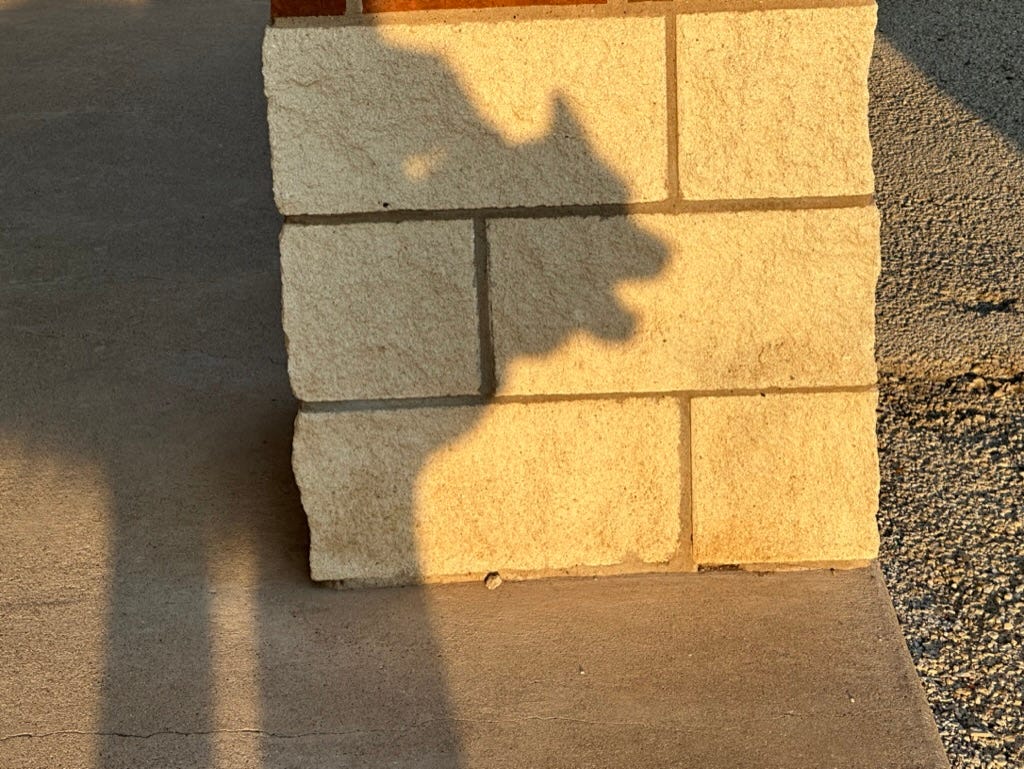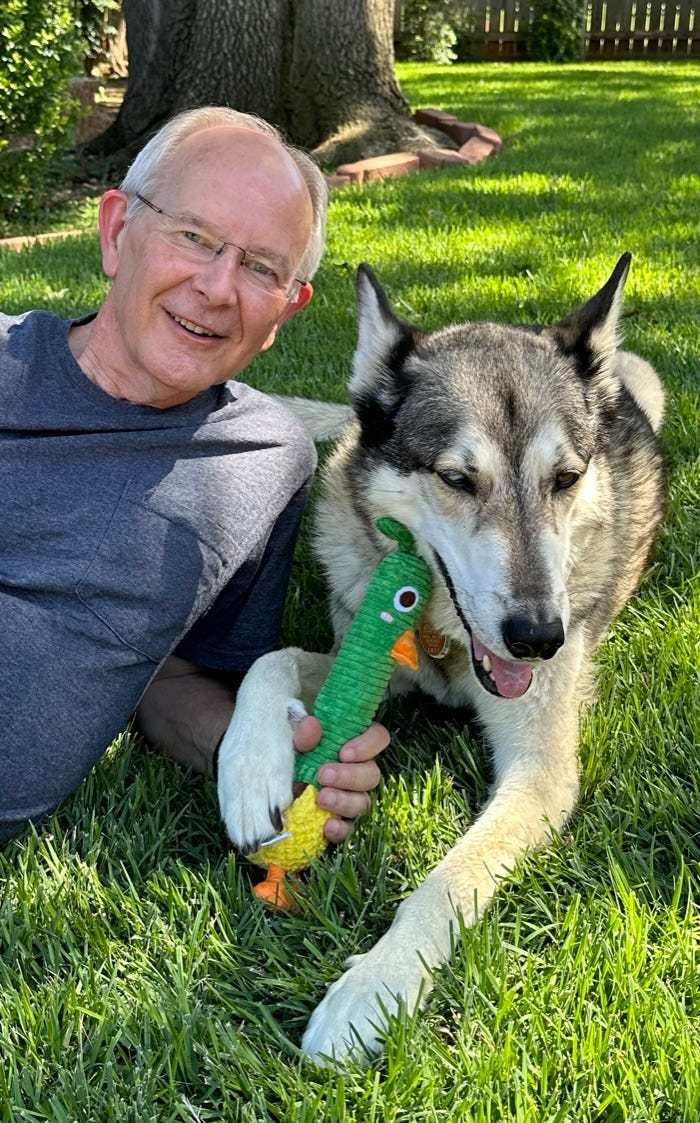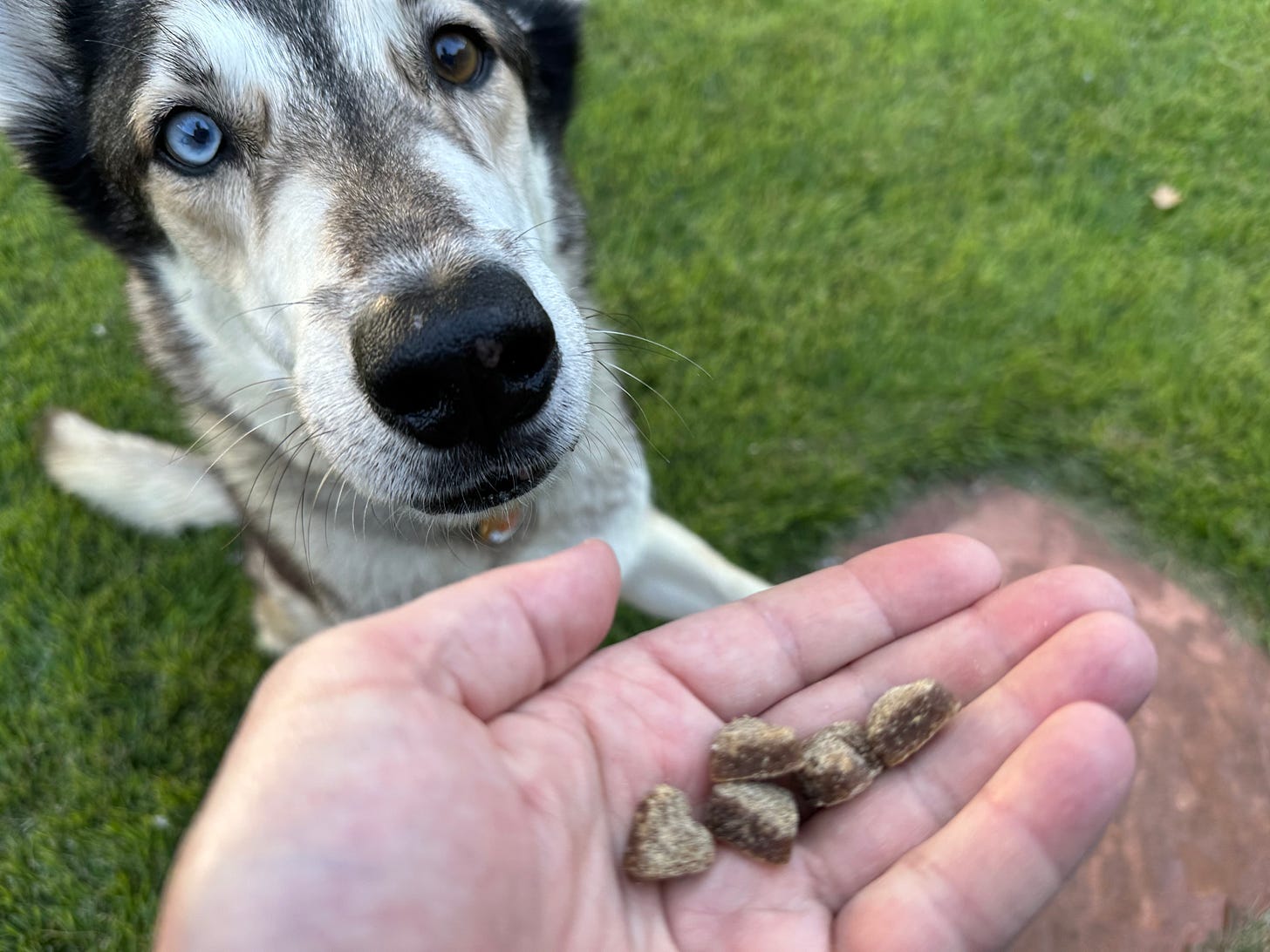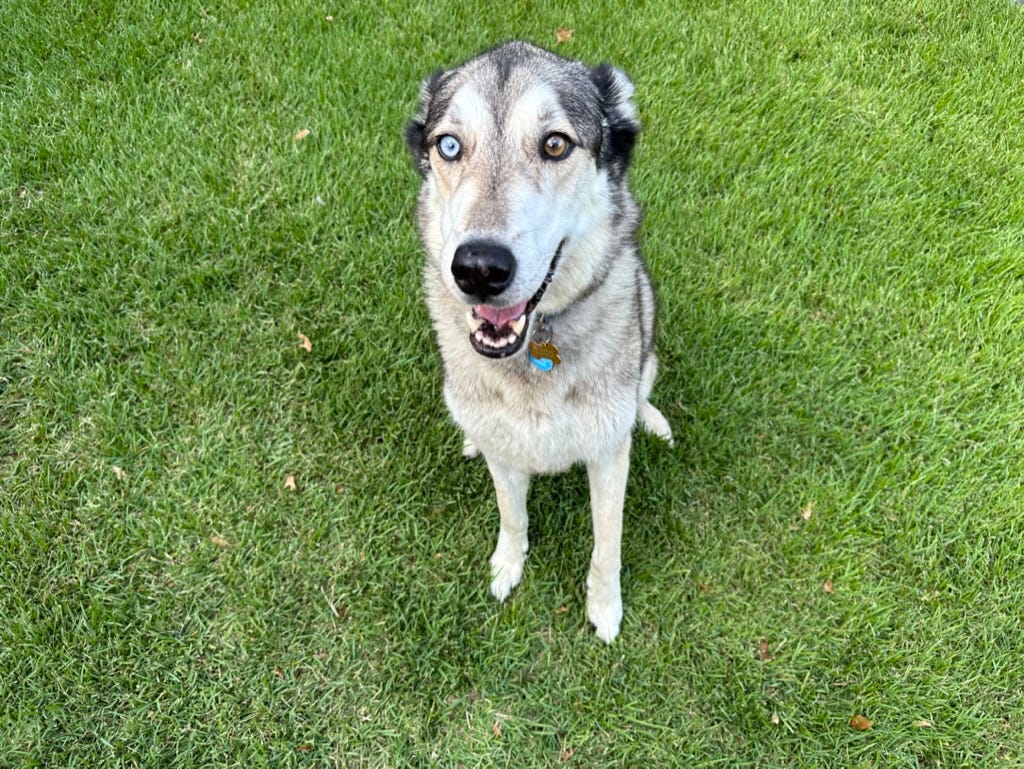Unless you live in the country where you can roam freely or have a nearby dog park that you frequent, one of the most important activities for your health and well being is walking. And because humans aren’t extremely intuitive when it comes to walking a dog, I’ve been providing these tips for you to use in training your human to walk. We covered the advantages of wearing a harness in Part 1 and leash management in Part 2. In this last installment, I want to cover the importance of route selection and routine.
You word lovers out there probably know that the words “route” and “routine” are related. “Route” means a way, path, or course. And “routine” means a customary course of action or almost mechanical performance of acts or duties. While you may be thinking “Oh, but variety is the spice of life” and “Who wants the old ‘same old, same old?’”, a solid set of options is one of the best ways to assure that your human will become disciplined and committed to your daily walk.
Thus, early in your walking training sessions, encourage your human to make the same turns every day at first. Most humans are apprehensive about taking walks. Letting them learn what to expect is one of the best ways to encourage them to walk. Routine is essential — and habitual.
It’s important to know why humans are apprehensive. Initially, it’s all about them. They create lives that require schedules and to make schedules work, they believe they need to know what can happen in any given activity so that they can “set aside time.” The good-natured human truly thinks that they are in control of their relationship with their dogs. Sometimes, I wish I was a cat since the feline species managed to dispense with this errant thinking long ago. But as dogs, we can use this protector mentality of humans to our advantage.
Thus, an established route is a clear path to putting them at ease. More on this in just a moment.
It’s also helpful to establish a second or even third route. For example, I have my campus route (complete with a walk-by of the places where the cats hang out), my neighborhood route (featuring a loop around the local fire station to keep a good connection with first responders), and my veterinarian route (a good use of my time when I want a walk AND it’s time for a check-up or an overnight pet hotel stay). I like the campus route best (think cats, college students, and friendly walkers), but the alternate route through the neighborhood is a prudent choice when thunderstorms are in the area or your human feels they are pressed on time.
To establish an alternate route, plan the first leg to be identical to starting on your primary walkway. But, at the first turn, simply stop, establish eye contact with your human, and then gaze longingly down an adjacent street or sidewalk. If necessary, pull that way a bit. Your human may balk at first, but after two or three instances of this and longer and longer eye contact, they will concede. It’s important that you not go overboard with the number of these optional ventures. (See above regarding the false human hope that they are in charge.)
Once you have your routes in place, you can begin to add extras along the way. I have friends that have established favorite sniffing areas or luxurious places to rest or play. My routes include some of these. However, my go-to extra is snacks.
Very early, I pointed Daddy to a website that suggested that treats could be used to make dogs better walkers. (At the time, Daddy was not savvy enough to know that the International Society Promoting Dog Welfare (aka “ISP Welfare”) has their own troll-farm that would put the Russians to shame. Except ISP Welfare doesn’t do anything nefarious like suggest that an election was stolen. But they do promote the generous giving of treats.)
Long story short, I average over 15 snacks per walk. I know exactly where I am to receive them, too. And I am diligent in reminding Daddy when we get to those spots. This is where routine comes in. Since we walk the basic routes everyday and have these preset treat rendezvous points, it all becomes routine with Daddy. Admittedly, he fretted over the number of treats early on. Now, he just hands then over like a vending machine.
As you can see, this is a very positive outcome of behavior modification. Practice this a while. When you’re ready I have a couple of extra moves that can yield more snacks.
The first one is easy. Instead of waiting until we reach a snack point, I often remind Daddy early. Sometimes he absent-mindedly will hand over a treat. Then, when we get to the actual snack point, I remind him again insistently. Most of the time, Daddy doesn’t remember that I was prepaid and I’m up an extra treat. You can’t use this more than once or twice per walk. Even Daddy wises up after a while.
A new technique I’ve just perfected is the dropped treat gambit. The key here is jostling your human’s hand just as they release your treat. Then, with your treat firmly in your mouth, drop your head and begin sniffing the ground as if you had dropped it. Your human will watch you search, feel bad you didn’t find the “dropped treat,” and provide another one. Granted, it’s a little deceptive, but effective.
If you’ve followed my advice to this point, you are an advanced trainer of human dog walkers. I’d mail you a certificate, but I’ve given up on mail services since they stopped making stamps that you can lick.
I hope you enjoy your walks. Remember, what your humans don’t know won’t hurt them.









The cats are offering free lessons in how to establish a routine of managing you human